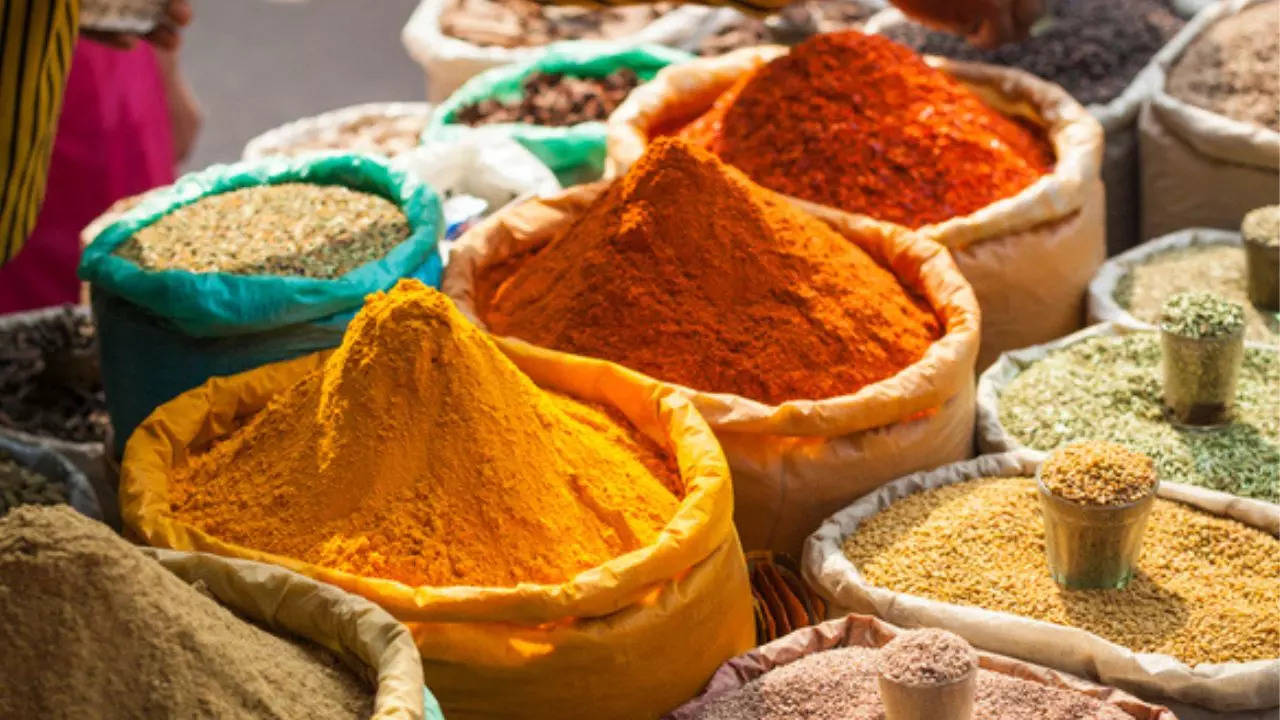Why Indian Food Brands Aren't Meeting Regulations And What Needs To Change
The public eye has been trained on Indian food brands as scandals unfold, products get banned and people face the fact that their food may not always be safe. But this problem has been going on for much longer than we'd like to admit. Revant Himatsingka (aka Foodpharmer) weighs in on the matter.

Indian spices have been making headlines for not meeting quality standards
Food is a necessity for every human being, and getting easy access to nutritious food seems like a reasonable ask. But in the modern world where consumerism is at an all-time high and brands are able to dictate people’s diets, we often see that getting adequate nutrition isn’t always as easy as it sounds.
Often turning to packaged and processed goods is the more affordable and accessible option for families in India, but it comes with the downside of not always being transparent about what’s in the product and the onus falls on the consumer to know what’s healthy and what’s not. A task that the general public isn’t usually qualified to do.
Revant Himatsingka aka Food Pharmer is a social media activist and author who is trying to change that narrative and put brands in charge of changing their products to fit nutritional requirements, not the other way around. “If something is within the regulatory norms formed by the FSSAI, people may ask, then what is the controversy all about?” says Himatsingka, “The idea is to understand that even if something is within FSSAI norms, it still may not be healthy, and the only solution is social awareness. Many people don’t read food labels and just go by the taste and price.”
Why Is Balanced Nutrition Necessary?
Health begins with what we put in our body, and ensuring we’re getting enough to sustain our vital functioning can get tough when we don’t have a clear picture of the ingredients. “You will find that in India we have 70-80% carbohydrates on our plates,” explains Himatsingka, “And secondly, it's full of low-quality fats. And this is simply because these are the most affordable ingredients, as you go for higher-quality rice or oils, the prices also go up. Everything is laden with fats, carbohydrates and sugars, not just packaged foods, but even generally in the Indian diet.”
Everest And MDH Spice Ban
Recently spice brands Everest and MDH have been making headlines for having unsafe levels of the carcinogenic substance Ethylene Oxide and have been banned in both Singapore and Hong Kong as a result until further testing can be done. For centuries, spices have been the backbone of the Indian economy and are known as one of the world’s largest suppliers. This incident has emphasised that even within a sphere that’s so trusted, there’s no guarantee unless the brands themselves are transparent about their process.
All of this comes back to brands not upholding their quality commitments somewhere along the production line “ISO (International Organization for Standardization) is the brand’s commitment, and what you say is what you do,” says Himatsingka. “In Hindi, I’d just say Man Vachan Karma” (from Hindu scriptures meaning what you think, say and do should be pure).”
However, according to Himatsingka, getting India’s food up to international standards may be more difficult than we anticipate. “Companies often say that they cannot make products that are up to Western standards because they offer cost-effective products. But that doesn’t mean you should have a different standard,” he says, “They may be legally within all the FSSAI guidelines, but that doesn’t mean they are healthy. Foods are let in with ingredients like palm oil, vegetable fats, sugar, low-quality protein or without sufficient nutritional value and India needs a lot of work on that. We don’t have the resources at a government level so people need to be aware and speak up about what they’re eating.”

Added Sugars
In the past, Himatsingka has called out multiple brands from Nestle to Indigo Airlines and even Maggi for misrepresenting the nutritional values of their products. For example, he found that in an average bottle of Maggi Tomato Ketchup, there was more sugar than tomato, a fact which the brand quickly corrected. Other brands such as Bournvita weren’t so cooperative and it took a panel of medical professionals backing Himatsingka’s claims to get them to change their stance.
Across the board, the ongoing cycle of brands being called out for substandard products can be traced back to a root cause of inadequate regulations and a lack of facilities to ensure the ones that are in place are being followed. According to Revant, the strongest defence consumers today have to ensure sound nutrition is simply awareness, and he adds that while many packaged brands are at fault, there is no one path to rectifying what is a systemic issue. It’s simply a matter of staying up to date and making sure brands uphold their promise to quality, as he says, “We’re not against any particular ingredient, what we want is for people to get balanced food with high nutritional value and a good taste.”
Trending:
End of Article
Subscribe to our daily Lifestyle Newsletter!
Related News





Natural Remedies To Remove Dead Skin Cells From The Body

8 Best Restaurants In Delhi's Hauz Khas Village For Memorable Meals

7 Celebrity Owned Restaurants In Delhi NCR That Are Must Visit For A Luxurious Meal

Janhvi Kapoor's Sheer Floral Saree Is Perfect For Summer, But It's Her TINY Bag That Has Us In A Chokehold

10 Life Lessons From The Book Drive: The Surprising Truth About What Motivates Us









